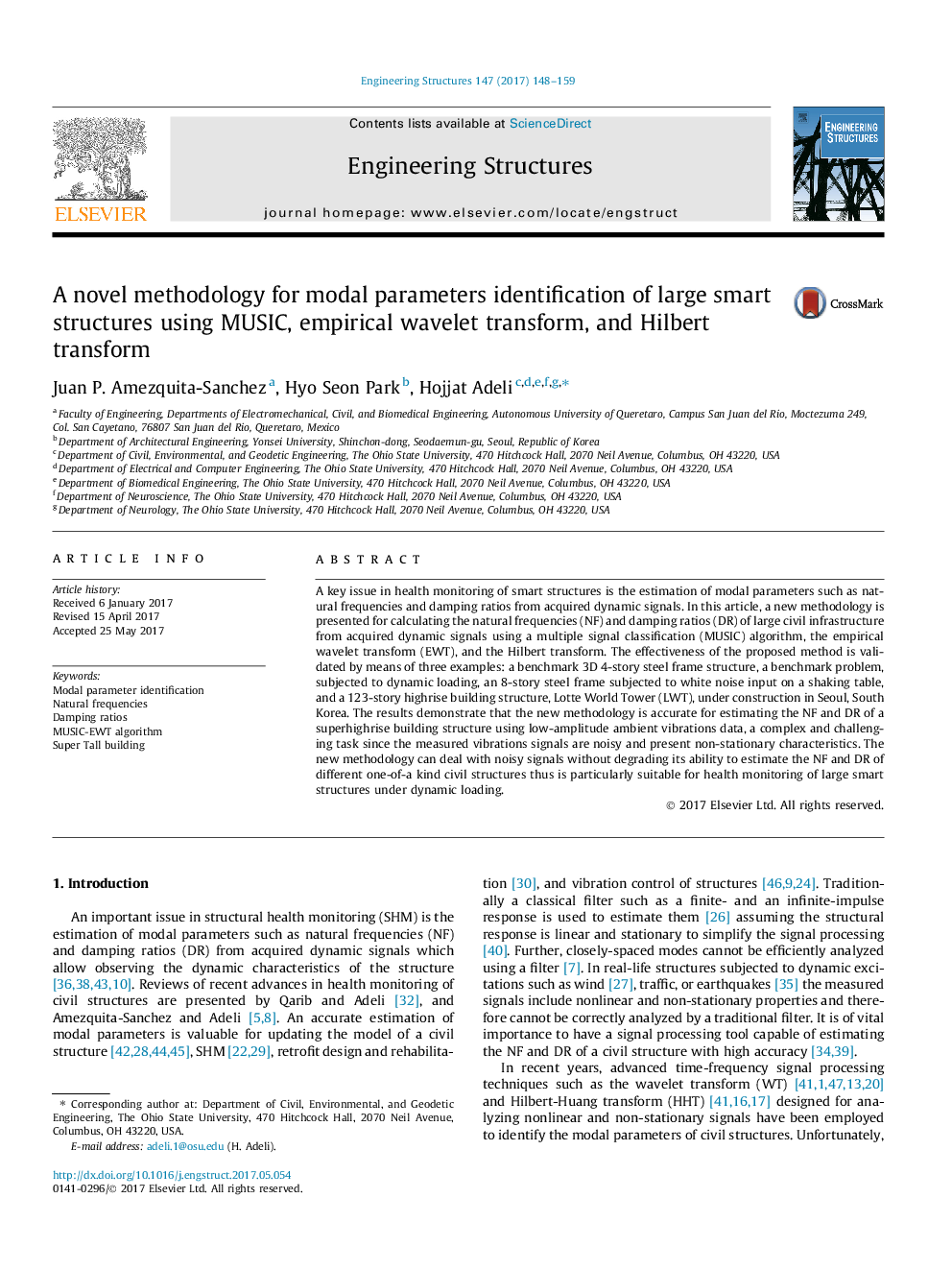| Article ID | Journal | Published Year | Pages | File Type |
|---|---|---|---|---|
| 4919902 | Engineering Structures | 2017 | 12 Pages |
Abstract
A key issue in health monitoring of smart structures is the estimation of modal parameters such as natural frequencies and damping ratios from acquired dynamic signals. In this article, a new methodology is presented for calculating the natural frequencies (NF) and damping ratios (DR) of large civil infrastructure from acquired dynamic signals using a multiple signal classification (MUSIC) algorithm, the empirical wavelet transform (EWT), and the Hilbert transform. The effectiveness of the proposed method is validated by means of three examples: a benchmark 3D 4-story steel frame structure, a benchmark problem, subjected to dynamic loading, an 8-story steel frame subjected to white noise input on a shaking table, and a 123-story highrise building structure, Lotte World Tower (LWT), under construction in Seoul, South Korea. The results demonstrate that the new methodology is accurate for estimating the NF and DR of a superhighrise building structure using low-amplitude ambient vibrations data, a complex and challenging task since the measured vibrations signals are noisy and present non-stationary characteristics. The new methodology can deal with noisy signals without degrading its ability to estimate the NF and DR of different one-of-a kind civil structures thus is particularly suitable for health monitoring of large smart structures under dynamic loading.
Related Topics
Physical Sciences and Engineering
Earth and Planetary Sciences
Geotechnical Engineering and Engineering Geology
Authors
Juan P. Amezquita-Sanchez, Hyo Seon Park, Hojjat Adeli,
